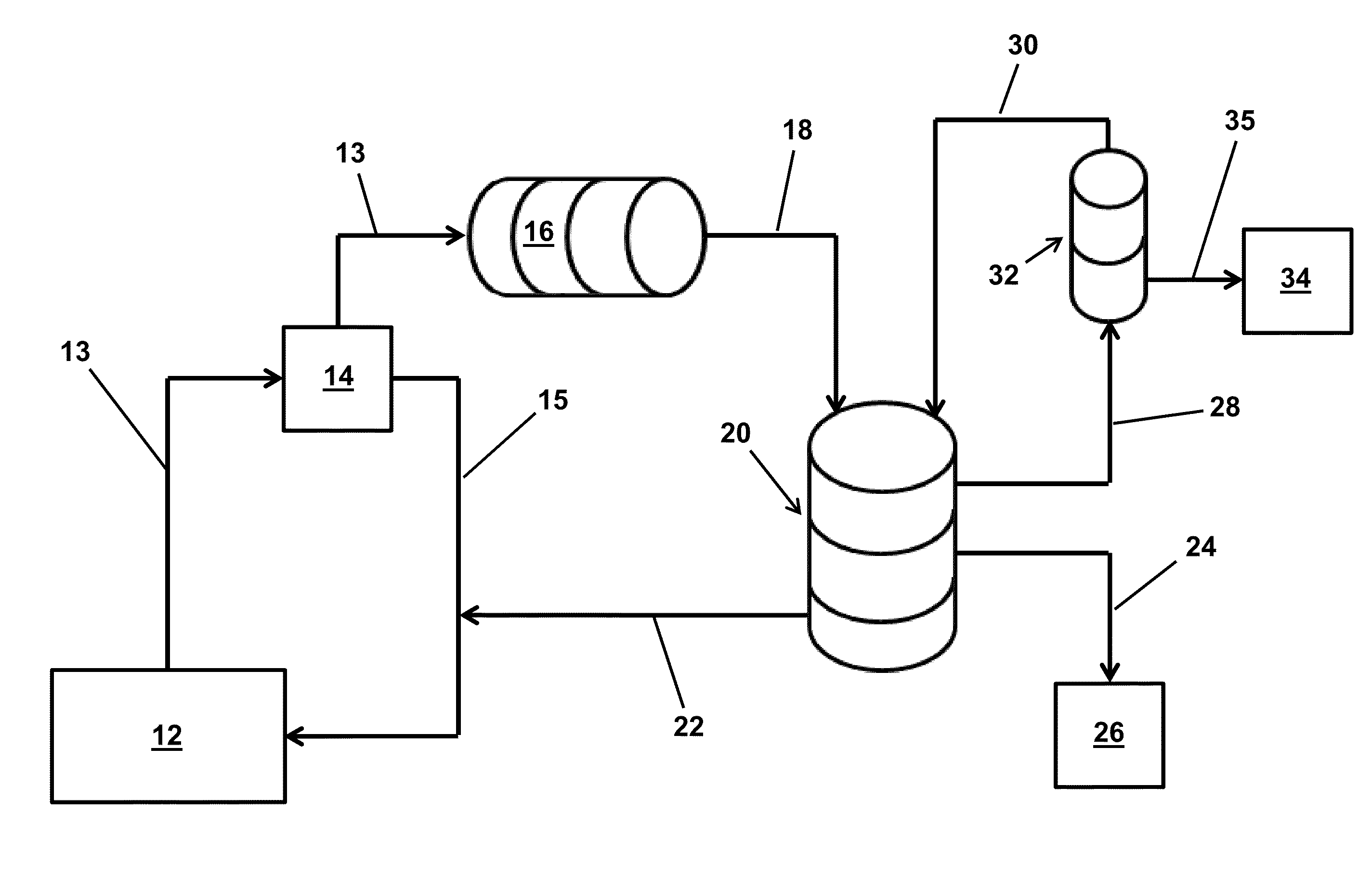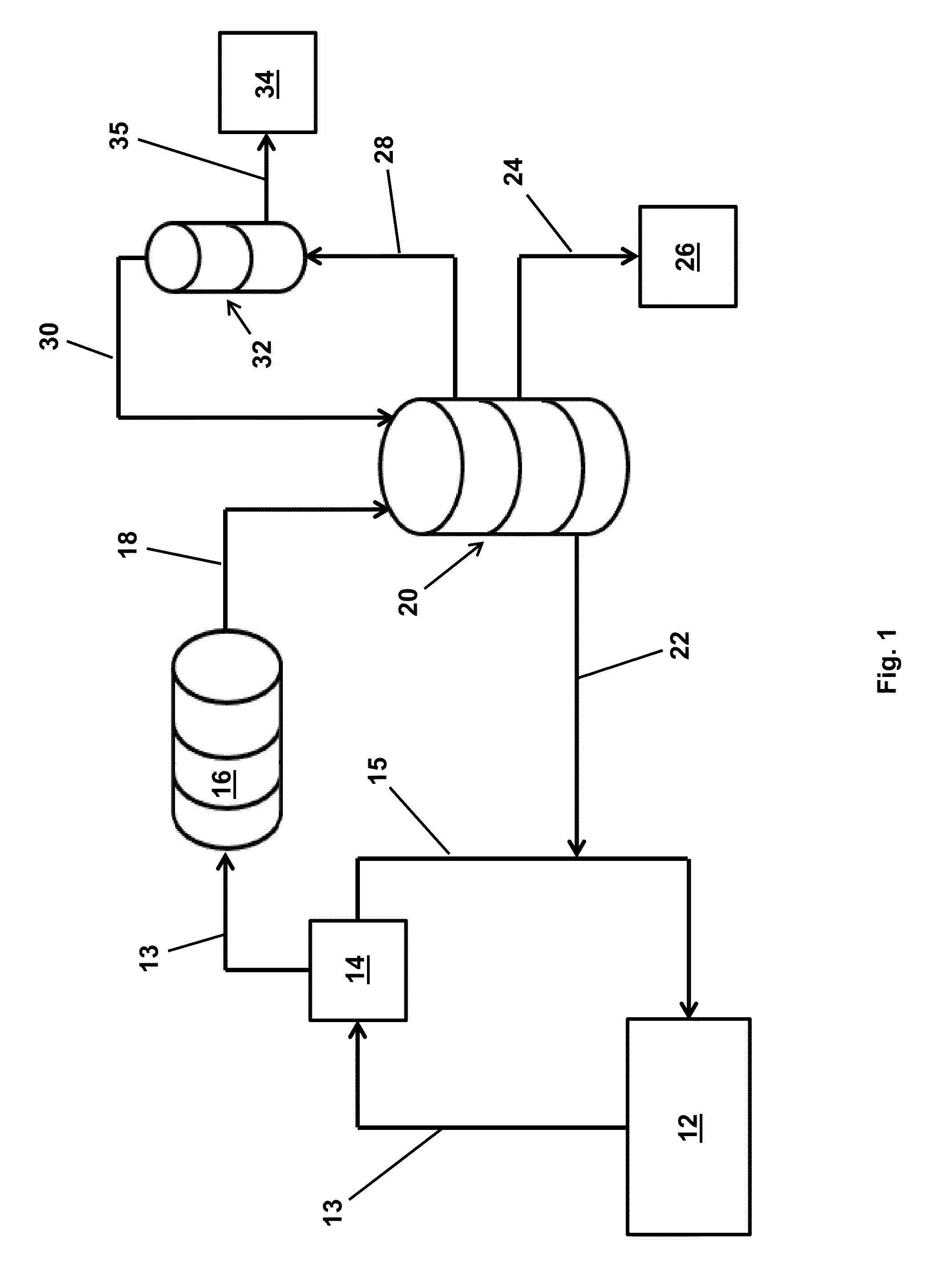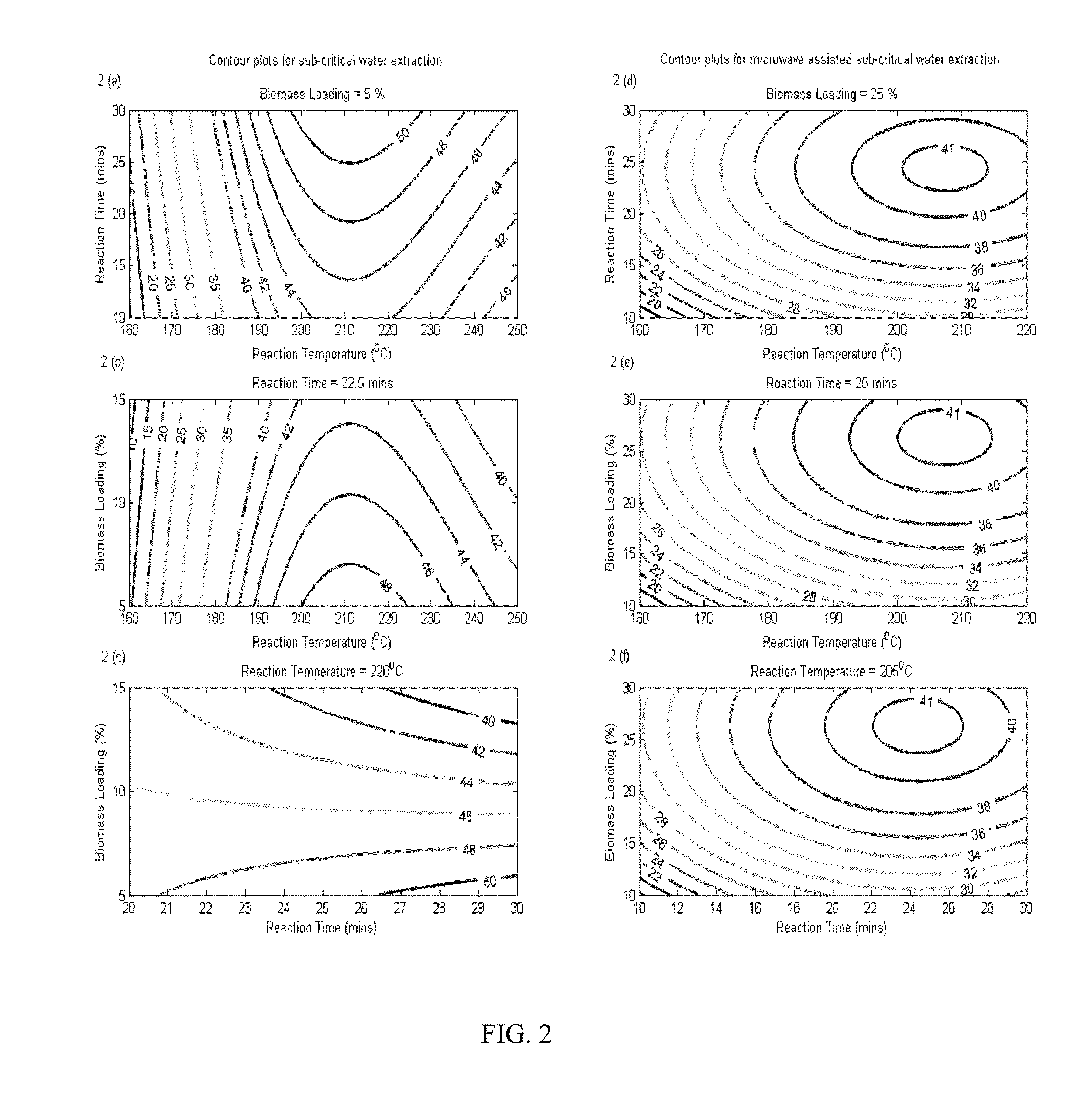Subcritical water extraction of lipids from wet algal biomass
a technology of biomass and lipids, which is applied in the direction of fatty-oil/fat production, fatty substance production, separation/purification of carboxylic compounds, etc., can solve the problems of consuming nearly 85% of production energy in the dry extraction method, reducing production, and reducing the effect of lipid extraction
- Summary
- Abstract
- Description
- Claims
- Application Information
AI Technical Summary
Benefits of technology
Problems solved by technology
Method used
Image
Examples
example 1
[0050]Response surface methodology is a statistical method used for optimizing the independent variables for maximum or minimum response. In this work, the independent variables are the following: extraction temperature (° C.), biomass loading (%-wt. of biomass / wt. of water), and extraction time (min). After finishing the tests, a suitable mathematical model was developed to predict the response based on the testsfactors. A 90% significance level was used to select the model terms. Complete analysis of variance (ANOVA) was done using Minitab v16.1.0 and the contour plots explaining the response surface were obtained using Matlab v7.12.0.635 (R2011a).
[0051]There was no extraction achieved at temperatures below 160° C. The bio-crude yield increased as the temperature was increased to 240° C., but byproducts started degrading to undesirable compounds in the extracted bio-crude. Hence a temperature range between 160° C. and 240° C. was used for optimizing the C-SCW extraction process. T...
PUM
| Property | Measurement | Unit |
|---|---|---|
| pressure | aaaaa | aaaaa |
| pressure | aaaaa | aaaaa |
| pressure | aaaaa | aaaaa |
Abstract
Description
Claims
Application Information
 Login to View More
Login to View More - R&D
- Intellectual Property
- Life Sciences
- Materials
- Tech Scout
- Unparalleled Data Quality
- Higher Quality Content
- 60% Fewer Hallucinations
Browse by: Latest US Patents, China's latest patents, Technical Efficacy Thesaurus, Application Domain, Technology Topic, Popular Technical Reports.
© 2025 PatSnap. All rights reserved.Legal|Privacy policy|Modern Slavery Act Transparency Statement|Sitemap|About US| Contact US: help@patsnap.com



